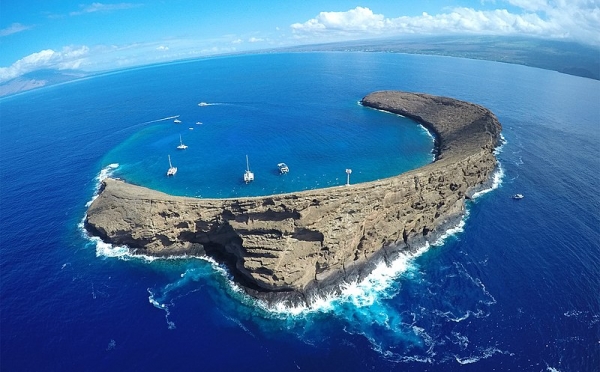During August 2019, more than 40,000 tourists visited Hawai`i’s Molokini island to snorkel or dive. In March 2020 the worldwide COVID lockdown dropped that number to zero.
The sudden and prolonged drop in visitors to one of the world’s most popular snorkeling spots provided scientists with a novel opportunity to study how underwater tourism impacts marine fishes. The results of their study, published in today’s issue of PLOS One, will help resource managers better care for Molokini and other threatened marine habitats.
The study’s lead author, Dr. Kevin Weng of William & Mary’s Virginia Institute of Marine Science, says “The COVID-related tourism freeze provided a unique natural experiment to measure the effects of decreased tourism on fish behavior in a high-use, no-take marine protected area.” Joining Weng on the study were Dr. Alan Friedlander and Whitney Goodell of the National Geographic Society and Dr. Laura Gajdzik and Russell Sparks of the Hawai`i Department of Land and Natural Resources. Friedlander and Goodell are also affiliated with the University of Hawai`i at Mānoa.
Molokini, which lies about 3 miles off the shore of Maui, was designated as a “no-take” marine protected area or MPA in 1977 based on tour operators' concerns regarding the impacts of fishing and other “consumptive” uses. “Tour operators have always been interested in the conservation of Molokini, and have partnered with the State on several measures," says Sparks. As the volume of “non-consumptive” uses such as snorkeling and SCUBA diving increased, tour operators worked with state officials to establish a limited-entry permit system for tour boats and install permanent moorings to protect corals from boat anchors.
Read more at Virginia Institute of Marine Science
Photo Credit: Bossfrog via Wikimedia Commons


